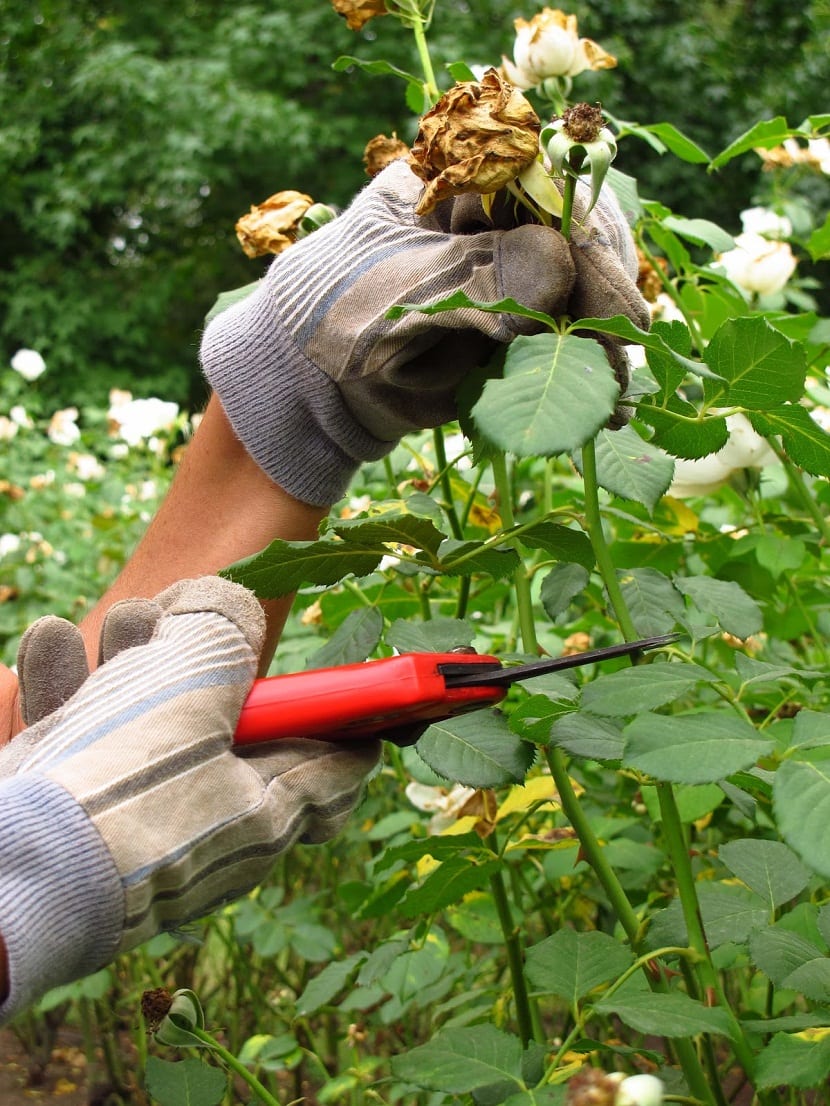
Pruning roses ensures that plants grow vigorously and flourish well every year, since if left unattended, the climbing roses can become a tangled mess of branches with very few flowers and although often considered complicated, pruning roses is not difficult if you follow this guide.
This method is suitable for climbing roses, sometimes being difficult to distinguish between a climbing rose and a normal rose.
The easiest way to tell the difference is to take note of the flowering time, since a climbing rose will bloom all summer and especially in the fall, while a normal pink it usually blooms only once, usually around June.
This method is also suitable for roses such as Boursault, Noisette and climbing roses like the Bourbon.
When to prune climbing roses?
Climbing roses are routinely pruned in winter, after the flowers have faded, between December and February. The long shoots can be cut or tied during the fall, to avoid damaging them by strong winds.
Renewal can be carried out at any time between late fall and late winter. It is easier to see what you are doing when the rose is not on the leaf, plus there is a better response from the rose, which should grow back vigorously the following spring.
How to prune rose bushes?
Climbing roses do not stand independently and need supports lattice or horizontal cables to which the shoots can be tied.
Place the lowest wire 45 inches (18 cm) off the ground and space subsequent wires 30 cm apart.
When you are placing these roses in pillars, arches or pergolas, twist the main shoots gently, keeping them as horizontal as possible, to thus encourage the buds to bloom.

Remove the leaves or flowers that are damaged, diseased, or thorny, during the blooming season to encourage the next blooming.
Pruning routine
First remove the dead, diseased, or dying branches.
Then guide new shoots needed to fill the supports.
Prune all flowery side shoots again, about two-thirds of their length
If the rose bush is very full, cut the really old branches from the grassroots to promote new growth.
Climbing rose renovation
Delete all dead, sick, dying and weak shoots.
Cut out some of the old branches and leaves a maximum of six young and vigorous stems that can be secured to the supports.
Delete any of the dead branches that is at the base of the plant, where rain can promote rot.
Shorten the side shoots on the remaining branches and prune the tips from a third to a half, to stimulate branching.
Give your pruned roses a boost the following spring by adding a granular pink fertilizer on the ground with a 5cm (2in) layer of garden compost or manure.
Rose bush pruning problems
Roses can suffer from a number of common problems, including the increase in disease at the time of transplant, rose dieback, blackheads on roses, powdery mildew on roses, etc. Particular pests include rose aphids, rose leaf fly, and large sawfly.
Blindness (lack of flowering) is another common problem of climbing roses.
You must be very aware of vines and roses, since these plants are not like others that can grow very well with little care (such as aloe vera). Keep constantly removing everything that is rotten or dead.
Water the roses correctlyas they can wilt or rot.
If you have constant care with these roses, you will look like a totally dreamy garden.